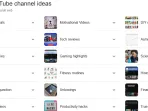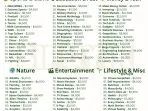Declutter Your Desk, Clear Your Mind in 15 Minutes
A cluttered desk is more than an eyesore—it’s a reflection of your mental state. When papers pile up, pens vanish, and digital notifications erupt like fireworks, your workspace quickly transforms from a place of productivity to a zone of chaos. But the good news is that reclaiming control doesn’t require a full-day cleaning spree. In just fifteen minutes, you can reset your physical space and, with it, your focus and peace of mind.

The Hidden Cost of a Messy Desk
We often underestimate how much clutter weighs on our minds. A 2011 Princeton University study on visual stimuli discovered that physical clutter competes for our attention, reducing productivity and focus. Each visible pile of documents or unopened envelope acts as a small mental reminder of unfinished tasks. The result is cognitive fatigue—the subtle, draining feeling that you’re always behind.
Clutter also influences mood. When your environment feels disorganized, your brain registers visual noise. This constant stream of sensory input can make even simple tasks feel harder than they should. Conversely, a tidy environment signals order, stability, and readiness to work. That’s why cleaning your desk is not just a physical task—it’s a cognitive and emotional reset.
The 15-Minute Rule for Restoring Order
Decluttering doesn’t need to feel overwhelming. The key is to set a tight, realistic timeline: fifteen minutes. When time is limited, your brain focuses on efficiency rather than perfection. This sense of urgency helps you make quicker, sharper decisions about what stays and what goes.
Here’s how to declutter effectively within those fifteen minutes.
Step 1: Prepare Your Mindset (2 Minutes)
Before you begin, take a deep breath and commit to the process. The goal is progress, not perfection. You’re not redesigning your entire office; you’re clearing unnecessary distractions. It helps to play calming background music or set a timer to reinforce focus.
Quickly visualize how your desk will look once clear: your laptop centered, one notebook open, maybe a small plant or photo for warmth. This mental image keeps your goal tangible and motivating.
Step 2: Clear the Surface (3 Minutes)
Start by removing everything from your desk except essential items like your computer or desk lamp. Pile all other items—papers, stationery, coffee mugs—into one temporary container. This creates an instant clean slate and gives you immediate visual relief.
Once your desk is empty, wipe the surface with a soft cloth or antibacterial wipe. Feel that sense of freshness returning already. A clear surface not only looks better but also resets your sensory environment, reducing stress almost immediately.
Step 3: Sort and Simplify (5 Minutes)
Now tackle the pile. Work fast. Your objective is to touch each item once and decide whether to keep, relocate, or throw it away.
Use the quick-sort method:
– Keep: Items used daily or essential to your current work.
– Relocate: Items that belong elsewhere—books, extra cables, or personal items.
– Discard: Junk mail, outdated notes, or broken items you keep “just in case.”
For papers, apply the “one-year rule”: if you haven’t touched it in the last year and it doesn’t hold legal or essential value, recycle it. For digital clutter like sticky notes or USB drives, decide whether to back up or delete right away.
Try not to linger on sentimental items. Emotional attachment is one of the biggest barriers to decluttering, but remember—your goal is mental clarity, not nostalgia. Store keepsakes elsewhere like a designated memory box.
Step 4: Assign a Home for Each Item (3 Minutes)
Every item you decide to keep should have a clear and accessible home. This prevents the clutter from returning within hours.
– Store pens and small tools in a single container.
– File active documents in a vertical sorter, while completed work goes into labeled folders or digital scans.
– Keep only one or two personal items like a photo or plant to add personality without distraction.
When every item has a place, your desk transitions from a random storage surface to a functional workspace optimized for focus.
Step 5: Establish a Mini-Maintenance Habit (2 Minutes)
Decluttering once is good; keeping it that way is better. Create a short daily ritual—just two minutes at the end of each workday—to reset your desk. Return pens to their holder, close your laptop, stack notes neatly, and toss any trash. When this becomes routine, clutter no longer sneaks up on you.
You can even set a Friday reminder called the “Desk Reset,” where you spend five minutes reviewing which items have crept back in and resetting your workspace for the week ahead.
The Psychology Behind Physical Order
What happens when your desk clears is more profound than aesthetics. You’re shaping an environment that encourages work immersion and mental calm. When the brain perceives order in the environment, it mirrors that sense of order internally. This synchronization creates a psychological zone often called “flow,” where cognitive processing becomes smoother and more efficient.
Minimalist spaces also invite intentionality. Fewer visual stimuli mean fewer unconscious triggers pulling your mind away from tasks. You regain the mental bandwidth previously wasted on reminders like “I really need to file those receipts.” That silence—both visual and mental—is what unlocks clarity.
Tools and Strategies to Sustain Long-Term Organization
A clean desk after fifteen minutes is satisfying, but long-term results depend on smart systems. Here are some helpful techniques to make order effortless.
1. The One-Touch Rule
When you pick up an item, handle it completely before setting it down again. For example, if you open a letter, decide immediately whether to file, reply, or discard it. Avoid half-finished actions that turn into clutter later.
2. Go Digital Where Possible
Many papers can be scanned and stored digitally. Tools like Google Drive, Notion, or Evernote can help reduce physical paper accumulation while keeping everything searchable. Label your folders clearly and schedule a monthly digital cleanup to mirror your physical one.
3. Keep a “To-Sort” Tray
If your schedule gets busy, designate one small tray where miscellaneous items can land temporarily. Commit to emptying it every Friday. This prevents small clutter from taking over your entire desk again.
4. Integrate Minimalist Design Principles
Decorate intentionally. One or two meaningful objects—like a framed photo, small plant, or minimalist calendar—add warmth without clutter. White space is powerful; it creates room for focus.
How Decluttering Impacts Productivity and Focus
A neat workspace doesn’t just make your office look good—it transforms your output. Here’s how:
– Improved focus: With fewer visual interruptions, your concentration strengthens. You can enter and maintain deep work phases longer.
– Reduced stress: Clean environments trigger a calming effect on the nervous system, lowering cortisol levels.
– Better time efficiency: You spend less time searching for items, mentally switching between tasks, or reorganizing mid-project.
– Enhanced creativity: Open spaces free up mental capacity for idea generation and problem solving.
– Professional image: Whether on video calls or in-person meetings, a tidy desk broadcasts competence and discipline.
It’s no coincidence that top performers and creative thinkers—from writers to CEOs—often describe cleanliness and order as catalysts for their best work.
The Mind-Desk Connection
The relationship between external order and internal clarity goes beyond mere metaphor. Environmental psychologists refer to it as embodied cognition—the idea that our physical surroundings directly shape how we think, feel, and behave.
When your desk is cluttered, your senses work overtime. You subconsciously track objects around you, dividing your attention. Once cleared, your brain quickly reorganizes itself, reducing mental noise and improving emotional balance. The simple act of cleaning becomes an exercise in mindfulness—quiet, deliberate, and grounding.
In fact, decluttering integrates seamlessly with mindfulness practice. You’re staying present, making conscious choices about what deserves space in your environment—and by extension, your life.
From Fifteen Minutes to a Lifestyle Shift
While a 15-minute desk reset works wonders, the ripple effects often extend elsewhere. Many people find that once they control one small space, they feel motivated to extend that clarity to their digital folders, closets, and habits. Small wins build momentum.
The beauty of this process lies in its accessibility. You don’t need fancy organizers or expensive storage systems—just a timer and willingness to start. The real transformation comes from understanding that physical clutter and mental clutter are connected threads in the same fabric. Each time you straighten a stack of papers or recycle a forgotten envelope, you reaffirm control over your time and attention.
A Simple Action Plan to Start Today
Here’s how you can start your 15-minute decluttering session right now:
1. Set a timer for 15 minutes.
2. Remove everything from your desk. Place non-essential items into a temporary container.
3. Wipe and refresh your workspace. Clean surfaces help reset your senses.
4. Sort through the pile quickly. Decide what stays, relocates, or goes.
5. Assign homes for kept items. Everything should have a designated spot.
6. Add one personal touch. A plant or photo helps create a pleasant, motivating vibe.
7. Reflect for a moment. Notice how your body feels in this cleaner space.
At the end of those fifteen minutes, pause and take a slow breath. Look at your desk—not just as a surface but as a mirror of your mental state. You’ve just proven that clarity can begin with a single, simple action.
Final Thoughts
A cluttered desk steals energy and focus, while a clear one gives them back. Decluttering isn’t only about tidiness—it’s about aligning your environment with your intentions. You can always buy more organizers, but you can’t buy peace of mind. That’s something you create—fifteen minutes at a time.
When your desk is clear, your thoughts follow. In that fresh space, creativity returns, deadlines feel lighter, and work transforms from stressful obligation into deliberate action. The next time your workspace begins to overflow, remember: clarity doesn’t require a weekend, only a quarter of an hour and a decision to start now.






